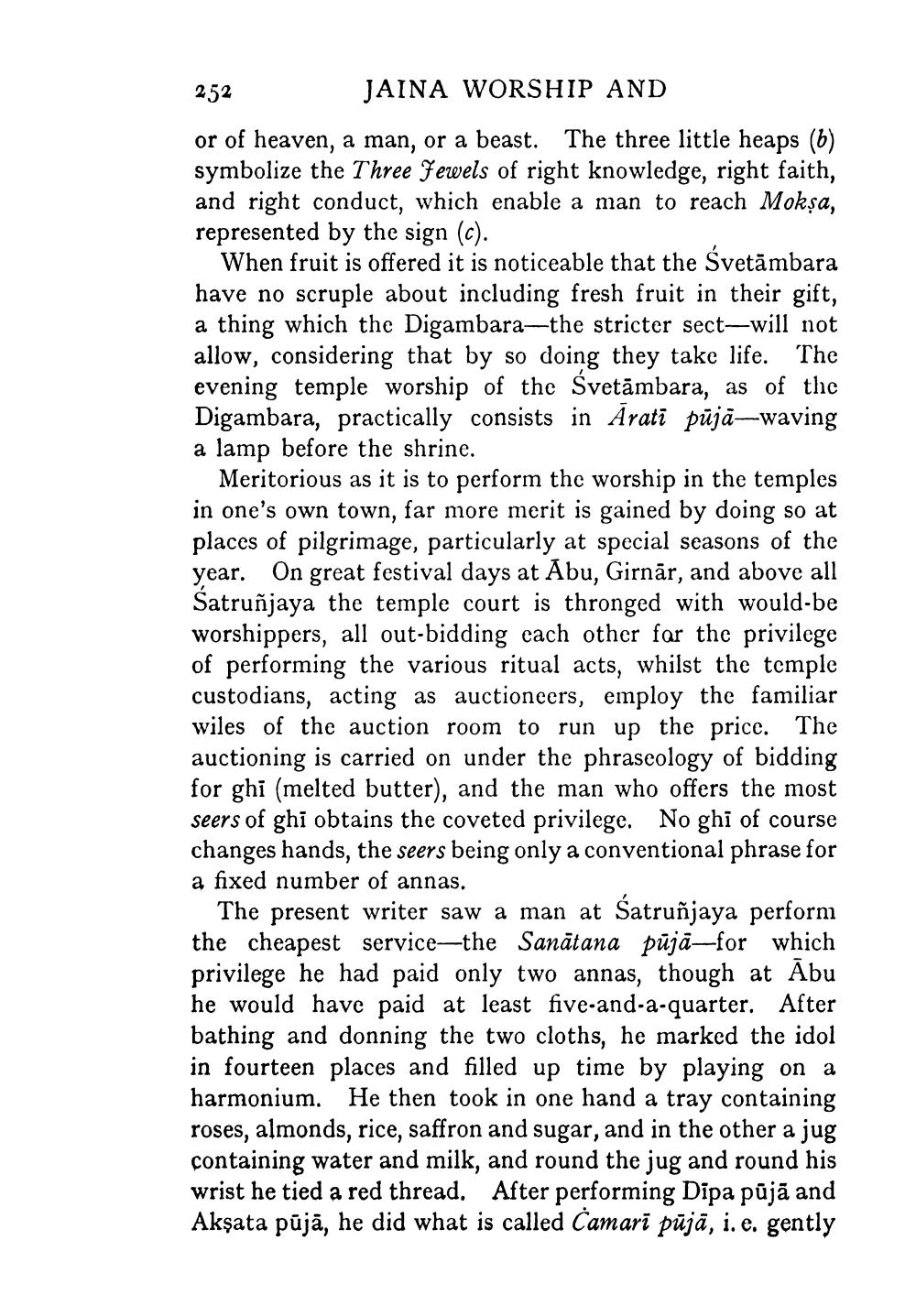________________
252
JAINA WORSHIP AND
or of heaven, a man, or a beast. The three little heaps (6) symbolize the Three Fewels of right knowledge, right faith, and right conduct, which enable a man to reach Mokşa, represented by the sign (c).
When fruit is offered it is noticeable that the Svetāmbara have no scruple about including fresh fruit in their gift, a thing which the Digambara—the stricter sect—will not allow, considering that by so doing they take life. The evening temple worship of the Śvetāmbara, as of the Digambara, practically consists in Āratī pājā-waving a lamp before the shrine.
Meritorious as it is to perform the worship in the temples in one's own town, far more merit is gained by doing so at places of pilgrimage, particularly at special seasons of the year. On great festival days at Abu, Girnār, and above all Satruñjaya the temple court is thronged with would-be worshippers, all out-bidding cach other far the privilege of performing the various ritual acts, whilst the temple custodians, acting as auctioneers, employ the familiar wiles of the auction room to run up the price. The auctioning is carried on under the phraseology of bidding for ghi (melted butter), and the man who offers the most seers of ghi obtains the coveted privilege. No ghi of course changes hands, the seers being only a conventional phrase for a fixed number of annas.
The present writer saw a man at Satruñjaya perform the cheapest service—the Sanātana pūjā—for which privilege he had paid only two annas, though at Abu he would have paid at least five-and-a-quarter. After bathing and donning the two cloths, he marked the idol in fourteen places and filled up time by playing on a harmonium. He then took in one hand a tray containing roses, almonds, rice, saffron and sugar, and in the other a jug containing water and milk, and round the jug and round his wrist he tied a red thread. After performing Dipa pūjā and Akşata pūjā, he did what is called Camarī pūjā, i. e. gently




